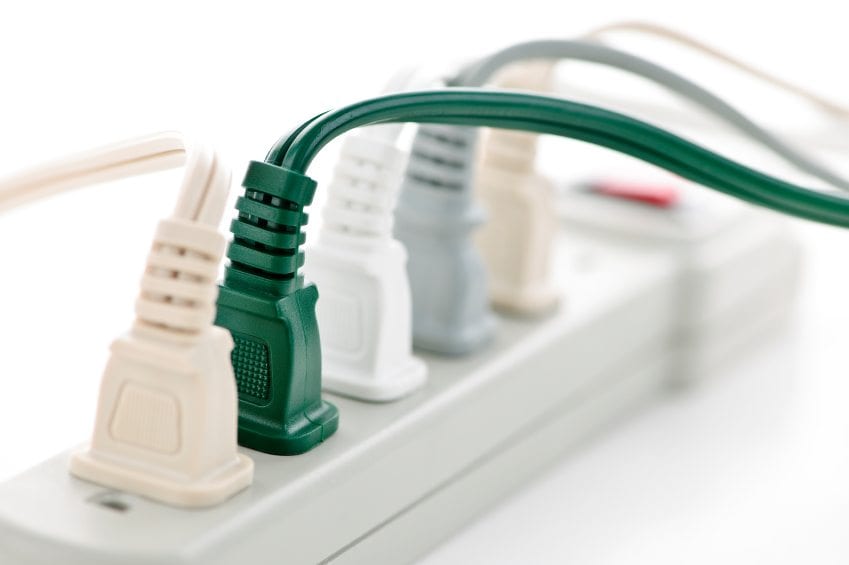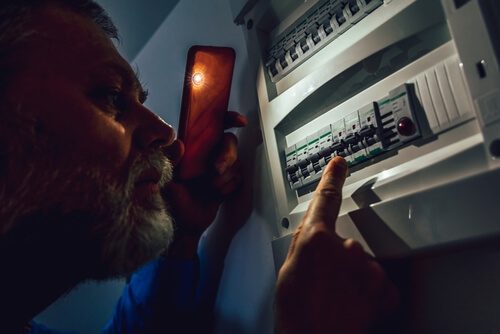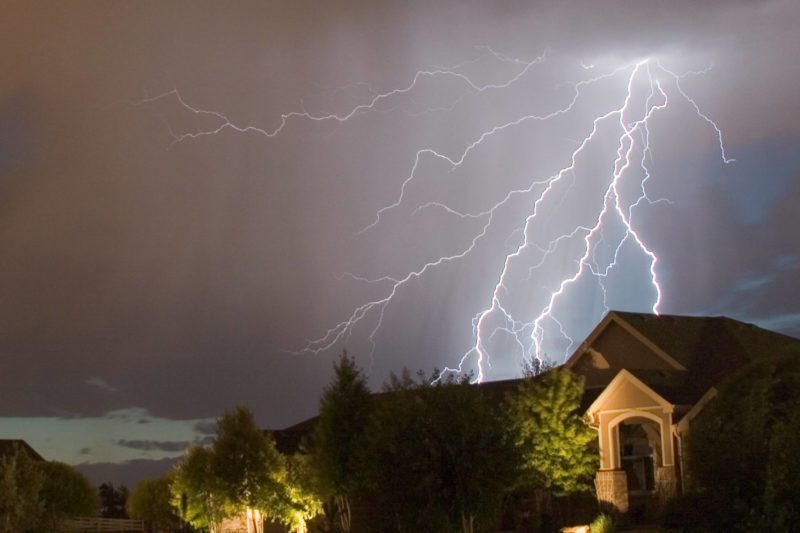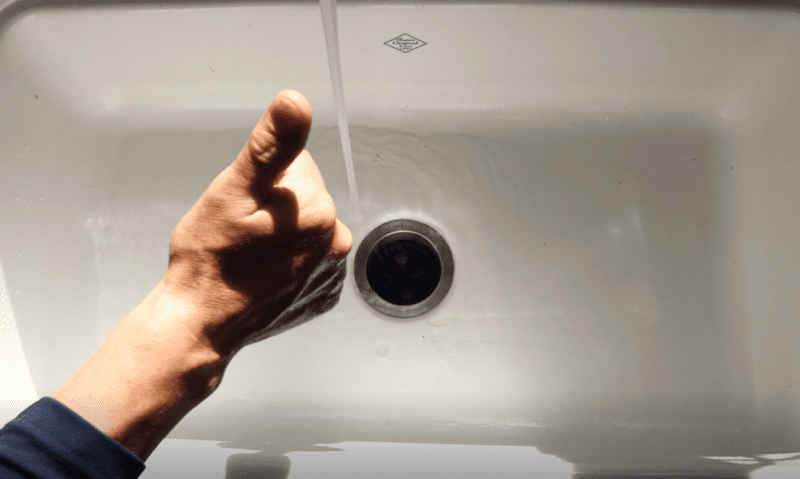Blog
When to Call an Electrician about Household Power Surges

If you are reading this article, you are concerned about a power surge or outage. This article will discuss what a power surge is, what causes it, what to do after one, and how to protect your home before the next one.
What is a Power Surge?
A power surge is an unexpected increase in voltage. A power surge occurs when the voltage in the electrical lines exceeds the normal flow of electricity. This is different from a power spike because the higher voltage levels last for more than a few seconds.

When powerful enough, a power surge can damage electrical devices and appliances like your air conditioner, television, computer, microwave oven, refrigerator, washer, dryer, and more. When these devices and appliances break, sometimes your home insurance will cover the cost, depending on the source of the power surge. Frequently, however, you are the one left footing the bill. Additionally, if your information and hard drives are not backed up, you can lose valuable and important data from your computer.
What Causes an Electrical Power Surge in a House?
There are a lot of causes of an electrical power surge in a home. Some of them come from external sources, and internal factors cause others.
External Sources of Power Surges In Homes
External sources are commonly the cause of most power outages in a neighborhood. They have the most significant impact on electrical systems and can produce electrical surges.

Here are some of the most common external causes of electrical surges in a house:
- Power Line Surges: Utility companies sometimes have problems with their transformers or lines, and customers experience a power surge.
- Lightning Strikes: When lightning hits homes, power lines, or the ground near utilities or transformers, it can damage your home. Even if the strike is several miles away from your home, it still has the potential to do damage.
- Other Weather and Nature: High winds, ice storms, fallen trees, animals, and more can all introduce problems and surges with the electrical lines.
Internal Sources of Power Surges In Homes
Most people think of power surges as coming from outside the home, such as from lightning strikes. But most power surges are caused by internal sources. 80 percent of electrical power surges originate within your own home.
Consider the major systems in your home that cycle on and off. The air conditioner or heat pump are excellent examples. When it powers on, large amounts of electricity are drawn to power it. When it turns off, the power is no longer needed. This makes a constant surge and release of power through your house.
Have you ever seen the lights dim as you turn on the vacuum or microwave? They draw a surge of power, temporarily removing the steady flow to other devices like lights until the system readjusts to the new power requirements.
Heavy power devices drawing on electricity, turning on and off, create tiny power surges through your house throughout the day. They don’t necessarily cause instantaneous damage like a lightning strike would, but they can cause cumulative damage to sensitive electronics and shorten the life of TVs, microwaves, and smart appliances.
Here are some of the most common internal causes of electrical surges in a house:
- Faulty or Old Wiring: When a home has older or poor electrical wiring, it can wreak havoc on your devices and appliances. Arcing electricity, poor wire insulation, no grounding, and lack of safety devices like circuit breakers all make older home wiring dangerous. Consider a whole-home rewire if your home’s wiring is old (40+ years).
- Short Circuits and Tripped Circuit Breakers: Circuits shorting in an electrical system and tripped breakers can lead to voltage surges and power spikes. Older circuit breakers can be damaged, and broken circuit breakers no longer provide the safety they are intended to. They could potentially be overloaded. If you have concerns about your electrical panel, schedule an appointment with your electrician.
- Regular Operation of Appliances and Household Equipment: Sometimes, just normal, everyday electrical appliances can be the culprit behind power surges. High-power appliances that cycle on and off, such as HVAC systems, washing machines, refrigerators, pumps, and more, are among the leading causes of voltage spikes.
What Do I Do After a Power Surge in My Home?
If a power surge has shocked your home, remain calm. Power surges are common and often don’t do any damage. However, significant power surges, such as lightning strikes, can destroy circuits and wiring in a flash.
Signs of a Power Surge:
- The circuit breakers in your electrical panel have flipped.
- Your electronic devices and appliances are powered off and not working.
- Digital clocks may be flashing.
- A burning smell around your devices, electrical panel, or outlets lingers.
Steps to Take After a Power Surge:
- Unplug all your devices (if there is a powerful lightning storm, do this beforehand).
- Keep your refrigerator and freezer closed until you have confirmed you still have power in the house. If you have no power, cold air will be lost every time you open the door, and food may spoil.
- Reset your circuit breakers.
- Plug in and repower all your electric devices.
- Inspect appliances, electronics, and electrical outlets to assess your home for damage.
- Inspect your HVAC system for functionality and damage.
How Do I Protect My House from Electrical Power Surges?
If you want to protect your home, electrical appliances, and electronic devices from power surges, you can take several steps to prevent damage and electrical issues.
Follow these four steps to protect your home and prevent electrical power surge damage.
1. Keep Trees and Plants Trimmed Away from Power Lines
Under the right conditions, trees, and tree limbs can conduct electricity if they come into contact with power lines. Do not climb trees near power lines, and do not attempt to trim trees away from power lines yourself. Instead, call your local electrical provider. They will send someone out to trim trees and plants that get too close to electrical power lines.
2. Keep Unused Devices Unplugged
Power surges cannot damage any device that isn’t plugged into your electrical system. This protects the device, potentially saves energy (some devices always draw energy), and helps protect it from electrical fires. The fewer things plugged in, the safer things are. If you aren’t using it, take half a moment to unplug it.
3. Call an Electrician for Whole-Home Surge Protection
Certified electricians can install a device on your main electrical panel that can protect your home for up to 40,000 amps. This whole-home surge protection device will divert power surges from external sources into the grounding system instead of letting it loose on your home’s circuits.
Do whole-house surge protectors really work? Yes! They will protect your home from lightning strikes, transformer explosions, and other power line surges coming from external sources.
4. Purchase Point-of-Use Surge Protectors
The whole-home surge protector will keep external surges from harming your home, but remember that 80 percent of power surges are caused internally. Most surge protectors come in the familiar form of power strips.
Not all power strips are surge protectors; they must specifically be rated for surge protection. The Underwriter’s Laboratory should rate these plug-in protectors. They are a global non-profit organization tasked with rating manufactured devices for safety. Plug-in surge protectors should have a clamping value of 400 volts or less, absorb 600 joules or more, protect all incoming lines, and have indicator lights to show if it’s working.
Use these surge protectors for important electronics like your computer, television, portable device charging blocks, and other devices you want to protect.
Apollo Home Surge Protection Services in Cincinnati
Apollo Home offers whole-home surge protection installations in Cincinnati, Northern Kentucky, and the surrounding areas. If you are ready to ensure the protection of your home, call Apollo. We’ll assess your house and determine the best surge protection for your home. We can also consult on what kind of in-home surge protection you might need to protect your devices from internal surges.
If your electrical panel or system is old and broken down, we can replace your electrical service panel and its circuit breakers and do partial or whole-home rewiring. Contact us today at 513-540-4082 to learn more.









